Plot summary
At the end of the previous novel, A Ship of the Line , after attacking and severely damaging a superior French squadron with HMS Sutherland, Hornblower had to surrender his ship to the French. He and his surviving crew are imprisoned in the French-occupied Spanish fortress of Rosas on the Mediterranean Sea. From the walls of Rosas, Hornblower witnesses an English raid leading to the final destruction of the French ships he immobilised.
Soon afterwards, Hornblower is told that he is to be sent to Paris to be tried as a pirate for his previous actions, including the capture of a battery and some coastal vessels using a ruse of war. Hornblower, his first lieutenant, Bush, who is still recovering from the loss of a foot in the fighting, and his coxswain, Brown, are taken away in a carriage by an Imperial aide-de-camp.
The carriage becomes stuck in a snowstorm on a minor road close to the river Loire, and part of the escort leaves to get help from Nevers, the next town. Hornblower and Brown overpower the remaining guards and steal a small boat on the river. Taking Bush with them, they set out downstream, but the river is in spate, and the boat eventually capsizes in some rapids. Hornblower and Brown carry Bush towards the nearest building, which happens to be the Chateau de Graçay. The Comte de Graçay, a member of the old French nobility who has lost three sons in Napoleon's wars, and his widowed daughter-in-law Marie, welcome them and protect them from the authorities, who eventually abandon the search thinking them drowned.
The party spends the winter as guests of the Comte and prepare for an escape in late spring. During these months, Bush recovers and learns to walk with a wooden leg. Hornblower, Bush and Brown build a new boat to continue their voyage downstream. Meanwhile, Hornblower and Marie have a short but intense love affair.
Springtime comes and the river is in perfect condition for travel. Disguised as a fishing party, the escapees make their way to the port city of Nantes. There, they change their disguise to that of high-ranking Dutch customs officers in French service, using uniforms made for them by Marie and the staff of the Chateau. They manage to recapture the cutter Witch of Endor, taken as a French prize the year before. Manning it with a prison work gang, they take the ship out of the harbour and rendezvous with the British blockading fleet.
Here, Hornblower learns that his wife Maria had died in childbed; his son, Richard, survived and was adopted by his friend Lady Barbara, widow of Admiral Leighton and sister of Arthur Wellesley, the future Duke of Wellington.
Returning to Portsmouth, Hornblower, in common with any other captain who has lost his ship, faces a court martial for the loss of the Sutherland. However, he is 'most honourably' acquitted by the court and finds himself a celebrity for his exploits in the Mediterranean and his daring escape from France. He is received by the Prince Regent (the later King George IV), who makes him a knight of the Order of the Bath and a Colonel of Marines (a sinecure providing worthy officers with extra income). Together with the money from prizes taken while he was captain of the Sutherland and from his recapture of the Witch of Endor, he is finally financially secure and free to court and marry Lady Barbara.
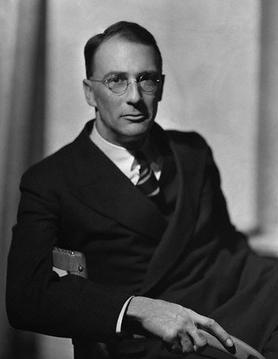
Cecil Louis Troughton Smith, known by his pen name Cecil Scott "C. S." Forester, was an English novelist known for writing tales of naval warfare, such as the 12-book Horatio Hornblower series depicting a Royal Navy officer during the Napoleonic Wars. The Hornblower novels A Ship of the Line and Flying Colours were jointly awarded the James Tait Black Memorial Prize for fiction in 1938. His other works include The African Queen and The Good Shepherd.
Admiral of the Fleet Sir Horatio Hornblower, 1st Viscount Hornblower GCB is a fictional officer in the British Royal Navy during the Napoleonic Wars, the protagonist of a series of novels and stories by C. S. Forester. He later became the subject of films and radio and television programmes, and C. Northcote Parkinson elaborated a "biography" of him, The True Story of Horatio Hornblower.
Caudebec-en-Caux is a former commune in the Seine-Maritime department in the Normandy region in northern France. On 1 January 2016, it was merged into the new commune of Rives-en-Seine.

Captain Horatio Hornblower is a 1951 British naval swashbuckling war film in Technicolor from Warner Bros., produced by Gerry Mitchell, directed by Raoul Walsh, that stars Gregory Peck, Virginia Mayo, Robert Beatty and Terence Morgan.

Mr. Midshipman Hornblower is a 1950 Horatio Hornblower novel written by C. S. Forester. Although it may be considered as the first episode in the Hornblower saga, it was written as a prequel; the first Hornblower novel, The Happy Return, was published in 1937.
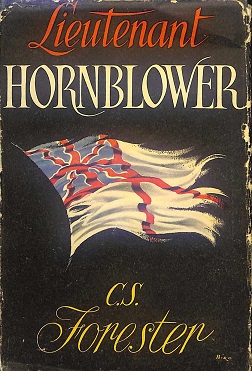
Lieutenant Hornblower is a Horatio Hornblower novel written by C. S. Forester. It is the second book in the series chronologically, but the seventh by order of publication.
The Even Chance is the first of eight Hornblower television adaptations relating the exploits of Horatio Hornblower, the protagonist in a series of novels and short stories by C.S. Forester. The Even Chance is the name given to the film in the United Kingdom, while in the United States it is known by the alternative title The Duel.
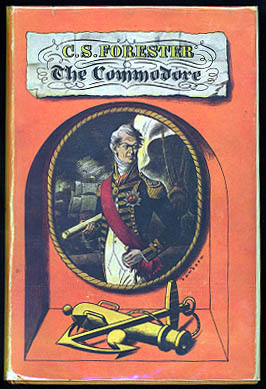
The Commodore is a Horatio Hornblower novel written by C. S. Forester. It was published in the United States under the title Commodore Hornblower.
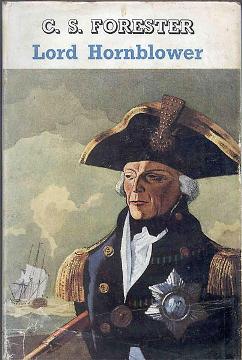
Lord Hornblower is a Horatio Hornblower novel written by C. S. Forester. Hornblower, a Knight of the Bath, is tasked with suppressing a mutiny on board a Royal Navy ship. He succeeds, and with reinforcements captures Le Havre. There follow several adventures and a disastrous affair in France, with Hornblower's eventual repatriation and reconciliation with his wife.

HMS Speedy was a 14-gun Speedy-class brig of the British Royal Navy. Built during the last years of the American War of Independence, she served with distinction during the French Revolutionary Wars.
Lucien is a male given name. It is the French form of Luciano or Latin Lucianus, patronymic of Lucius.
The Examination for Lieutenant is an episode of the British television series Hornblower. It is loosely based on part of the 1950 novel Mr. Midshipman Hornblower by C. S. Forester. It was released on DVD in the United States under the title The Fire Ship.
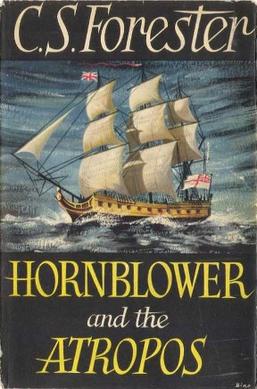
Hornblower and the Atropos is a 1953 historical novel by C.S. Forester.
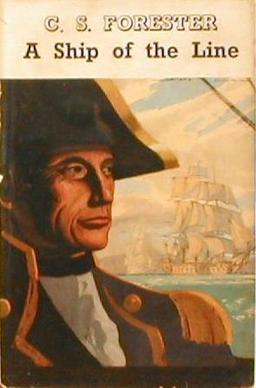
A Ship of the Line is an historical seafaring novel by C. S. Forester. It follows his fictional hero Horatio Hornblower during his tour as captain of a ship of the line. By internal chronology, A Ship of the Line, which follows The Happy Return, is the seventh book in the series. However, the book, published in 1938, was the second Hornblower novel completed by Forester. It is one of three Hornblower novels adapted into the 1951 British-American film Captain Horatio Hornblower R.N..
The Frogs and the Lobsters is an episode of the television program Hornblower. It is set during the French Revolutionary Wars and very loosely based on the chapter of the same name in C.S. Forester's 1950 novel Mr. Midshipman Hornblower and on the actual ill-fated Quiberon expedition of 1795.

The Bagne of Toulon was the notorious prison in Toulon, France, made famous as the place of imprisonment of the fictional Jean Valjean, the hero of Victor Hugo's novel Les Misérables. It was opened in 1748 and closed in 1873.
The Duchess and the Devil is the third episode of the British television series Hornblower. The episode first aired on 24 February 1999 on ITV. The television story is loosely based on C. S. Forester's 1950 novel Mr. Midshipman Hornblower, chapter "Hornblower, the Duchess, and the Devil".
Loyalty is the seventh film of the British TV film series Hornblower, based on the books by C. S. Forester, particularly Hornblower and the Hotspur. It was released on 5 January 2003, nearly four years after the first four films and nine months after the next two films.
Duty is the eighth and final episode of the British TV series Hornblower, based on the 1962 book Hornblower and the Hotspur by C.S. Forester. It was released on 6 January 2003, a day after episode 7: Loyalty.










